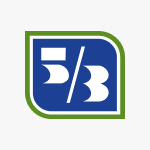Fifth Third Q2 2021 Earnings Report
Key Takeaways
Fifth Third Bancorp reported strong Q2 2021 results, with net income available to common shareholders of $674 million, or $0.94 per diluted share. The bank saw improvements in revenue, well-managed expenses, and low net charge-offs.
Launched Fifth Third Momentum Banking across footprint.
Announced acquisition of Provide, a leading fintech company serving healthcare practices (expect to close early August 2021).
Generated consumer household growth of 4% vs. 2Q20.
Published second annual ESG report on June 30th.
Revenue by Segment
Forward Guidance
Fifth Third expects to generate and return a significant amount of excess capital to shareholders over the next year.
Positive Outlook
- Commercial lending production trends and pipelines continue to indicate improved loan growth once supply and labor constraints normalize.
- Acquisition of Provide, a leading fintech company serving healthcare practices, to further accelerate profitable relationship growth over the long-term.
- Launch of Fifth Third Momentum Banking, a consumer banking value proposition unparalleled in the industry, to further accelerate household growth and continue to provide a differentiated customer experience.
- Focused on disciplined client selection, generating strong relationships and managing the balance sheet through varying cycles over a long-term performance horizon.
- Well-positioned to benefit when interest rates rise and well-hedged if rates remain at low levels for several more years.
Challenges Ahead
- Effects of the global COVID-19 pandemic.
- Deteriorating credit quality.
Revenue & Expenses
Visualization of income flow from segment revenue to net income
Historical Earnings Impact
Analyze how earnings announcements historically affect stock price performance

